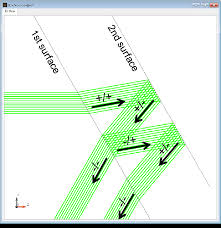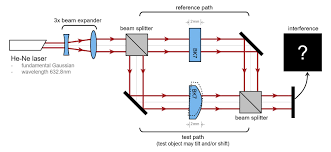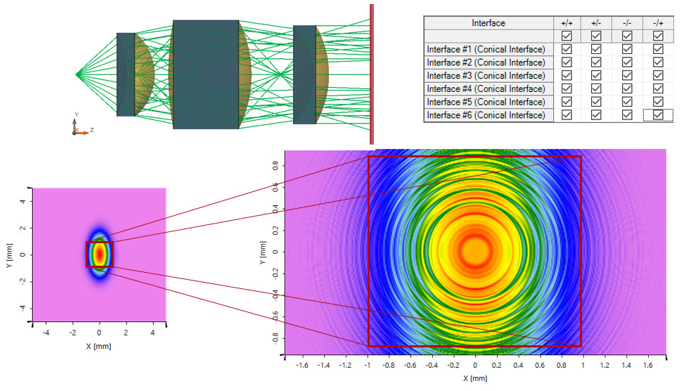
propagation channels

interferometer

telescope

non-sequential optics

lightguide
Non-sequential applications: interferometers, telescopes, light guides, reflections, ghost images, stray light
VirtualLab Fusion Basic, or
VirtualLab Fusion Advanced -
includes FMM/RCWA for rigorous grating analysis
VirtualLab Fusion Advanced -
includes FMM/RCWA for rigorous grating analysis
The VirtualLab Non-Sequential Extension works along with the Starter Toolbox program for simulating and designing interferometers, telescopes, prisms, etalons, light guides and other optical systems that require reflections, interference, and split and folded light paths.
The Non-Sequential Extension is also for analyzing unwanted reflections, ghost images and stray light.
Sequential or non-sequential propagation channels can be defined at each surface in the optical system, as shown at the left.
Non-sequential propagation is available for both ray tracing and field tracing (fully vectorial physical optics).
Here is how it works. At each surface, a propagation channel is defined according to the way light propagates at that surface.
Forward, left-to-right, propagation is defined as a + channel, and right-to-left propagation is defined as a - channel.
One of four propagation possibilities is configured for each surface. These are a +/+, +/-, -/-, or -/+ channel, as shown in
the first figure on the left. Example 1: A +/+ channel means light propagates from left-to-right direction to a surface
and continues in the same direction. Example 2: A +/- channel means light propagates from left to right to the surface, then
reflects in the opposite direction. Example 3: A -/- channel means light travels right to left to that surface and continues in
the same direction. Example 4: A -/+ channel means light travels from right to left to that surface, and then reflects from left
to right.
In addition to propagation channel directions, the Non-Sequential Extension allows setting energy thresholds, maximum energy
values and channel accuracy resolutions.
Non-sequential propagation is quick to set up, and it gives accurate analysis of those applications that include, interference,
split or folded light paths, and those optical systems that are degraded by reflections, ghost images or stray light. The VirtualLab
Non-Sequential Extension, along with the Starter Toolbox program, simplifies modeling realistic propagation through the light path.
Ask to see examples of non-sequential applications.
To contact HMS Technology Sales for more information click here
To contact HMS Technology Sales for more information click here